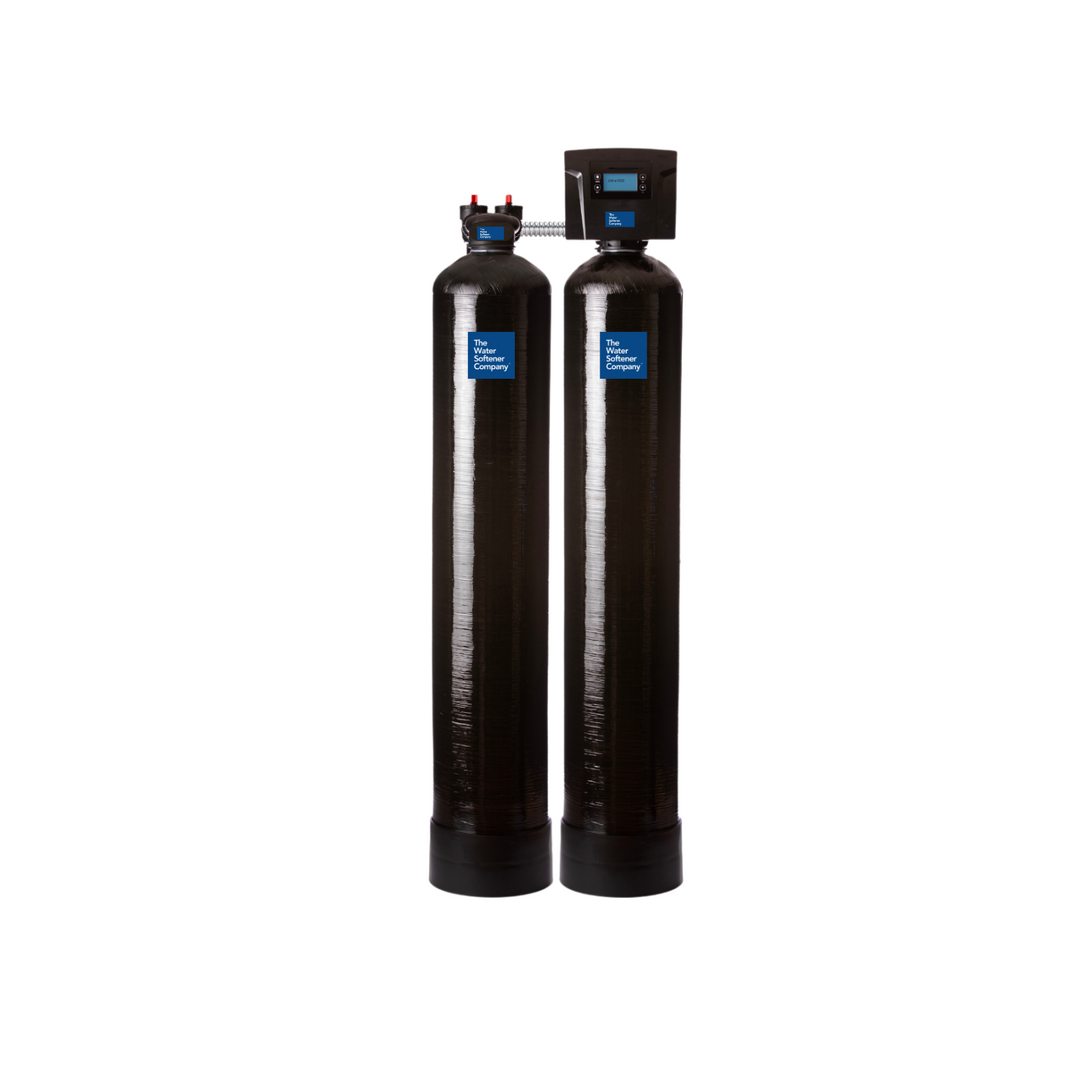
Arsenic Filter XTR
- In stock, ready to ship
- Backordered, shipping soon

✔ Point of Entry Arsenic III & V Removal
✔ Reduces arsenic in well water up to 500ppb.
✔ Salt Free & Chemical Free Auto Backwash Filter
✔ Also Removes Lead, Iron, Manganese & Hydrogen Sulfide
(For Heavy Iron, Manganese or Sulfur go with our Iron Filter XTR)
Effective & trouble-free arsenic removal without the use of messy or dangerous chemicals.
The Water Softener Company's Arsenic Filter XTR is a high Arsenic reduction system, featuring our leading MXCR & ARM35+METSORB arsenic reduction medias.
MXCR Metal-Oxide Catalytic Reduction
MXCR is a special media designed to provide excellent catalytic properties required for the removal of heavy metals including arsenic contaminants from potable water. Metal-oxide nano-particles within the resin form very strong chemical bonds with arsenite (As III) and arsenate (As V). This allows MXCR to thoroughly and effectively remove arsenic.
Chemical Free Regeneration: Does not require chemicals such as chlorine dioxide, potassium permanganate, chlorine or sodium chloride brine solution for regeneration. The oxidative chemical locked inside MXCR beads is regenerated via the dissolved oxygen in the backwash water.
Applications: MXCR requires less contact time and is like standard softening resins in bulk density and handling making it an ideal choice for point-of-entry systems. MXCR can be backwashed at lower flow rates to achieve ideal bed expansion needed to remove metal-oxide precipitates generated during the service cycle. MXCR is easy to handle versus other oxidative media and many naturally occurring zeolites.
Expected Service Life: The unique nature of MXCR and its function as an oxidizing agent encapsulated within an ion exchange bead, allows for a long service life of 5 to 10 years.
Aldex NSF/ANSI 61 Certified.
ARM35+METSORB
This Patented highly effective granular adsorbent removes arsenic III & V, and a wide variety of heavy metals including Lead, Cadmium, Copper, Chromium+6, Selenium, Zinc, Iron & Manganese.
The increased surface area afforded by ARM35+METSORB Titanium coupled with advanced pore volume provides excellent kinetics of adsorption.
Maintaining a higher capacity and a lower level of ion interference. This media is long-lasting and upon exhaustion, has consistently tested nonhazardous for disposal classification. NSF Standard 61 approved, and has received regulatory approval from agencies across the United States and Canada.
Chemical Free Regeneration Does not require chemicals such as chlorine dioxide, potassium permanganate, chlorine or sodium chloride brine solution for regeneration.
Applications Ideal choice for point-of-entry systems & point of use.
Expected Service Life Long service life of 5 to 10 years. Water Testing should be performed every 2 years.
GRAVER NSF/ANSI 61 Certified.
Water Testing should be performed every 2 years.
Contaminant Removal – Lab Data
Test 1: In-coming water spiked - 200ppb of Arsenic III & V.
• Filter operated, product water samples taken after several bed volumes.
• Third party testing found product water Arsenic level non-detected (0ppb).
Test 2: In-coming water spiked - 500ppb of Arsenic III & V.
• Filter operated, product water samples taken after several bed volumes.
• Third party testing found product water Arsenic level non-detected (0ppb).
Test 3: In-coming water spiked - 1000ppb Arsenic III & V.
• Filter operated, product water samples taken after several bed volumes.
• Third party testing found product water Arsenic level non-detected (0ppb).
Test 4: In-coming water spiked - 1000ppb Arsenic III & V, 5ppm Ferrous Iron, 5ppm Manganese, & 5ppm Hydrogen Sulfide.
• Filter operated, product water samples taken after several bed volumes.
• Third party testing found all levels: Arsenic III & V, Ferrous Iron, Manganese & Hydrogen Sulfide all levels non-detected (0ppb).
About Arsenic
Arsenic is a semi-metal element in the periodic table. It is odorless and tasteless. It enters drinking water supplies from natural deposits in the earth or from agricultural and industrial practices. Arsenic has been linked to cancer of the bladder, lungs, skin, kidneys, nasal passages, liver and prostate. Non-cancer effects can include thickening and discoloration of the skin, stomach pain, nausea, vomiting, diarrhea, numbness in hands and feet, partial paralysis and blindness (United States Environmental Protection Agency, 2015).
On January 22, 2001, the EPA set the arsenic standard for drinking water at 0.01 mg/l or 10 parts per billion (ppb) to protect consumers served by public water systems from the effects of long-term, chronic exposure to arsenic.
You may also be interested in:
|
|
|